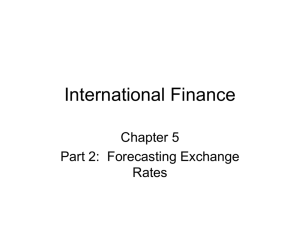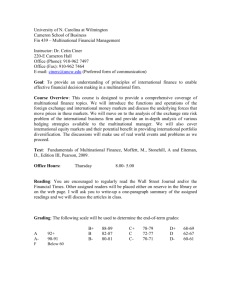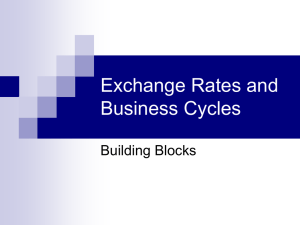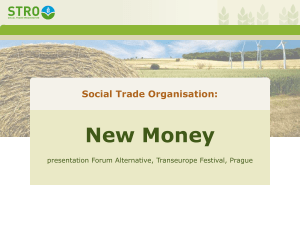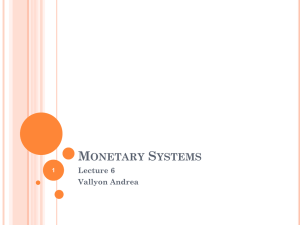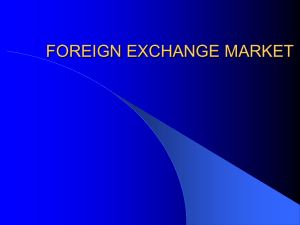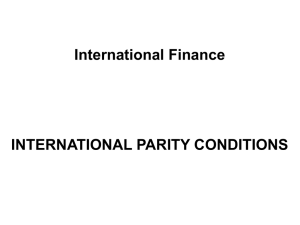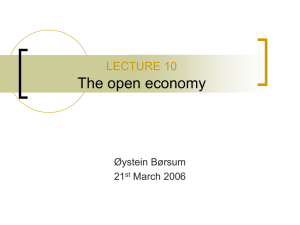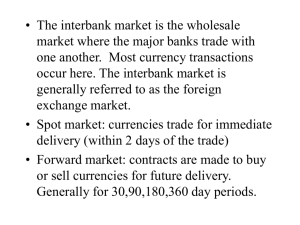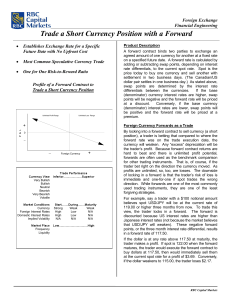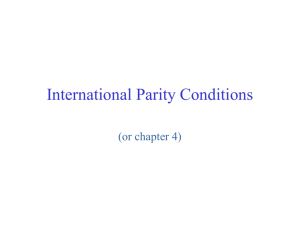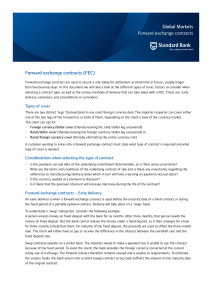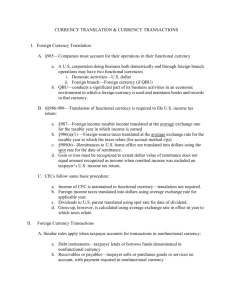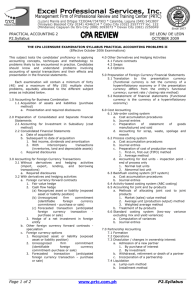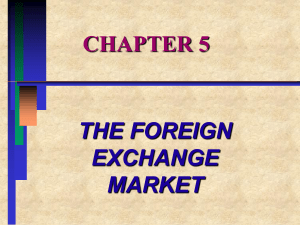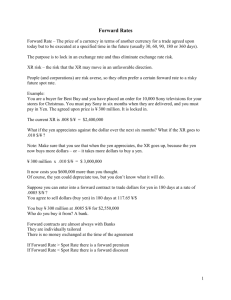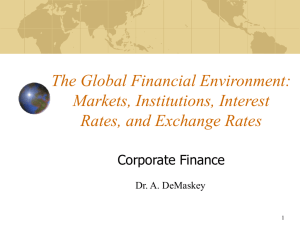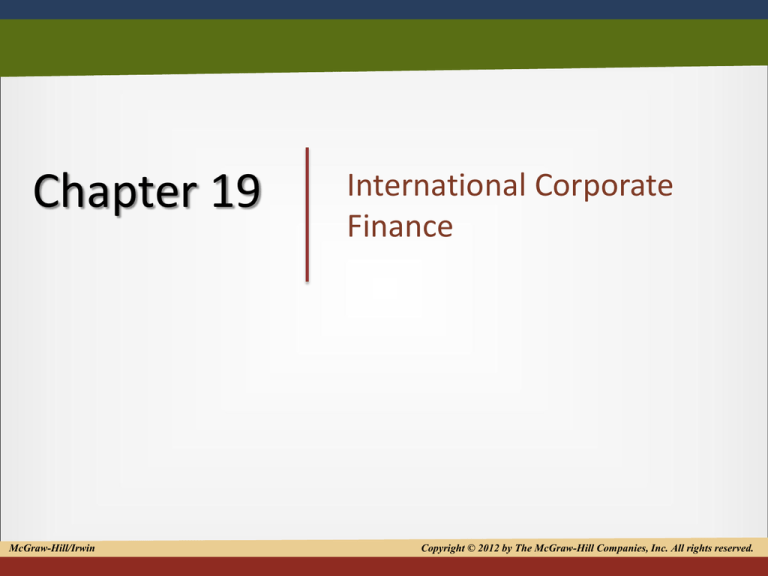
Chapter 19
McGraw-Hill/Irwin
International Corporate
Finance
Copyright © 2012 by The McGraw-Hill Companies, Inc. All rights reserved.
1
Introduction
• Today’s business and financial environment is
global
• Typical opportunities and risks are magnified
in this global environment
19-2
Global Business
• International Opportunities
– U.S. is the largest economy in the world
– Developing economies that are growing faster
than the U.S. include China and India
19-3
International Opportunities
• The four largest export partners for the U.S.:
– Canada
– Mexico
– China
– Japan
19-4
International Opportunities
Trade restrictions and tariffs affect trading
activity between countries
• Trade Agreements
– NAFTA
– CAFTA
– Mercosur
19-5
International Opportunities
• Trading Zones
– European Union
• International organizations WTO and IMF
promote and facilitate unrestricted trade
19-6
Corporate Expansion
into Other Countries
• Lowest level of corporate expansion is simple
import and export operations
• Highest level is direct capital involvement
through Multinational Corporations (MNCs)
19-7
Foreign Currency Exchange
• The FOREX market is one of largest financial
markets in the world — OTC
– Commercial banks
– Investment banks
– Foreign exchange dealers and brokers
19-8
Exchange Rates
• The exchange rate is the price of one currency
stated in terms of another
• Currency transaction types
– Spot transaction
– Indirect quote
– Direct quote
19-9
Exchange Rate
• Arbitrage
– Form of buying low and selling high
– Opportunities to profit through exchange rate
mispricing
19-10
Exchange Rate Risk
• Potential for exchange rates to change
unfavorably over time
• Freely-floating regime
– Exchange rates are free to change according to supply
and demand for the currencies
19-11
Exchange Rate Risk
• Managed-floating regime
– Governments attempt to influence exchange rates by
buying or selling their currency to change supply or
demand
• Fixed peg arrangement
– A government fixes, or pegs, their currency’s value to
another currency
19-12
The Forward Exchange Rate
and Hedging
• Spot exchange rates are for transactions
occurring now
• Exchange rate risk can be managed by
negotiating forward exchange rates
19-13
The Forward Exchange Rate
and Hedging
• Hedging strategies are used to reduce
exchange rate risk
– Minimizes firm’s need to exchange foreign
currency
– Locks in exchange rates using forward rates
19-14
Interest Rate Parity
• Difference between spot and forward rates are
due to differences in the interest rates of two
countries
19-15
Purchasing Power Parity
• Illustrates the relationship between exchange
rate changes and inflation
• Law of one price
– Identical products should have the same price,
adjusted for currency exchange, no matter where
in the world they sell
Pd = Pf x Spot rate
19-16
Relative Purchasing Power Parity
• Interest rate parity is the relationship between
current spot rate and forward rate
• Relative purchasing power parity describes
how current spot rate will change in future
19-17
Relative Form of PPP Equation
19-18
Political Risks
• Country’s political environment may adversely
affect investments
–
–
–
–
Government seizure of company’s assets
Expropriation with minimal compensation
Enactment of new taxation
Limiting or blocking currency conversion
19-19
Minimizing the Impact
of Political Risk
• Use local financing
• Purchase country risk insurance
19-20
International
Capital Budgeting
• Investing internationally comes with
additional sources of risk
– Managers should use a higher discount rate to
adjust for higher risks
19-21
International Capital Budgeting
Cash flow estimates will be in foreign currency,
while the discount rate is usually evaluated
from the domestic country perspective
• Managers can adjust by
– Converting all estimated cash flows to domestic
currency using estimated exchange rates
– Adjusting the discount rate to an equivalent rate
in the foreign country to account for differing
inflation rates
19-22






